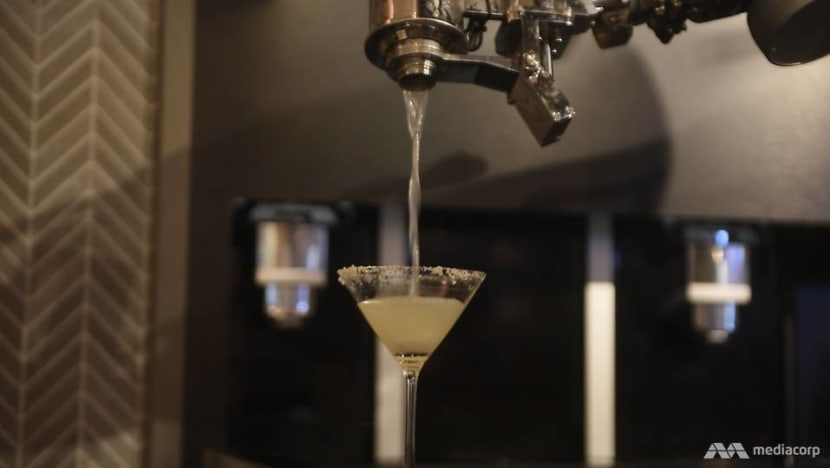Can robots help to save the ailing F&B industry?
They can mix a cocktail as fast as a human bartender can, and make coffee that tastes almost as good as a master’s brew, but can they address the declining footfall in F&B outlets?
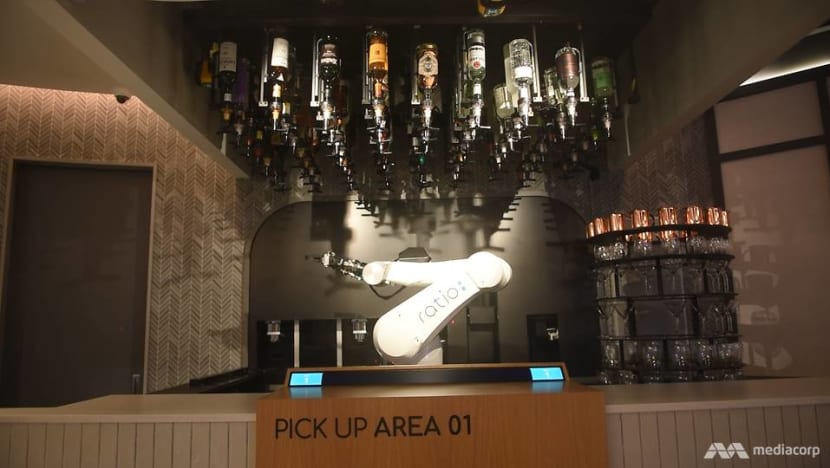
A robot bartender called Ratio.
SINGAPORE: Over the years, restaurant owner Jerry Singh has been constantly “fighting with other (food and beverage operators) to find bartenders”.
It takes him between two and six months to hire a bartender. And even when he finds one, the turnover rate is high.
“We’re reliant on people who treat (bartending) as a career, but sad to say, not many Singaporeans treat this as a career,” he lamented.
“We’ve offered all kinds of bonuses, such as commitment bonuses in months four and seven. We dangle the carrots, and it still doesn’t offer any guarantee that the guy will stay.”
This is why, for his new restaurant in Seletar Aerospace Park, he is leveraging a robot bartender system called Ratio — developed by Singaporean company Ross Digital — to alleviate that manpower crunch.

This bartender can make a cocktail in under two minutes: The robotic arm picks up a glass or a shaker, fills it up with alcohol from the bottles hanging from the ceiling, mixes it and slides it to the customer.
Ratio is a collaborative robot, or cobot, which is designed to work alongside humans in shared spaces.
And with the coming of this new incarnation of robots, some F&B players are hoping there are ways it could help their ailing industry.
READ: For F&B outlets, COVID-19 is a wake-up call. Here are seven changes they can make
ROBOTS TO PRESERVE KOPITIAM-STYLE COFFEE?
Ratio was created in 2018 by Singaporean Gavin Pathross, chief executive officer of Ross Digital, as he saw a push for automation in the F&B industry. The company officially launched the Ratio Robotic Cafe and Lounge at The Centrepoint yesterday (Nov 2).
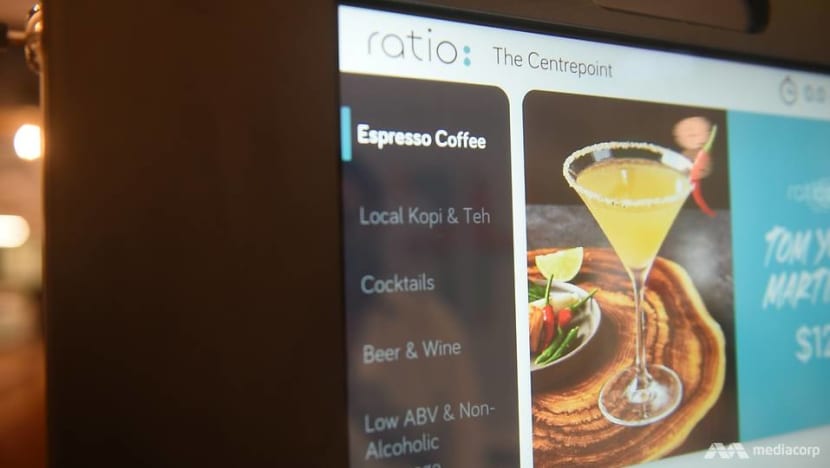
Robots, he noted, can be programmed to do the repetitive and what some people consider the dirty work that “nobody really wants to do”, including washing dishes and flipping burgers.
Some robots, like Ratio, can do more complex jobs, like making coffee and cocktails, he said.
He even thinks robots may potentially help to preserve kopitiam-style coffee-making when nobody else wants to earn a living making the S$1 cups of coffee that the old “tao chiew” (coffee brewers) now sell.
To create that authentic style of coffee, he had engineers work with several skilled brewers to understand their craft so that Ratio would be able to replicate what they do.
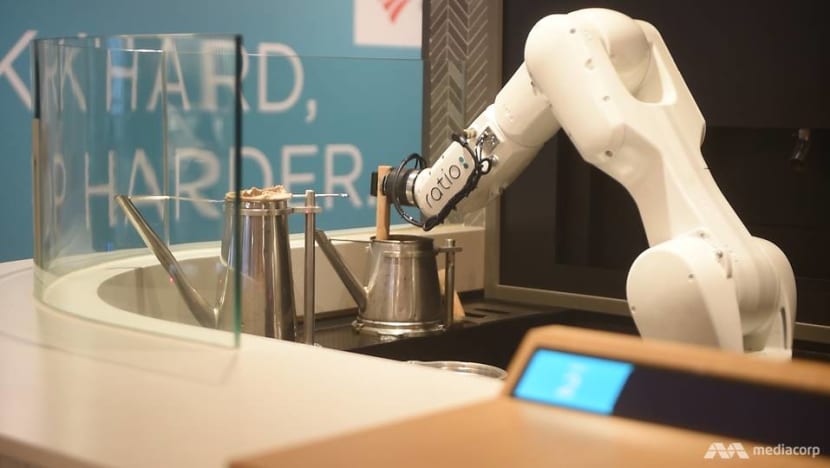
“Through trial and error … we’ve managed to almost perfect it,” he said.
After a tasting session, Ebenezer Coffee Manufacturer managing director Andrew Sim said the brew made by Ratio almost matched the taste of traditionally brewed coffee.
It was enough for him to believe that such robots can take over the “tao chiew” role in future. “(The) robot-made coffee will be very consistent (while the) ‘tao chiew’ coffee will be quite inconsistent,” he said.
Earlier this year, local start-up Hawkermatic also launched a machine that can make a consistent cup of kopitiam-style coffee after its founder, Jason Thai, could not find a skilled brewer for his canteen-style coffee shop at Infinite Studios in one-north.
Then there is Ella, a state-of-the-art robotic barista created by Crown Group's technology arm, Crown Digital. The company is now seeking to expand Ella’s market presence in Singapore and beyond.
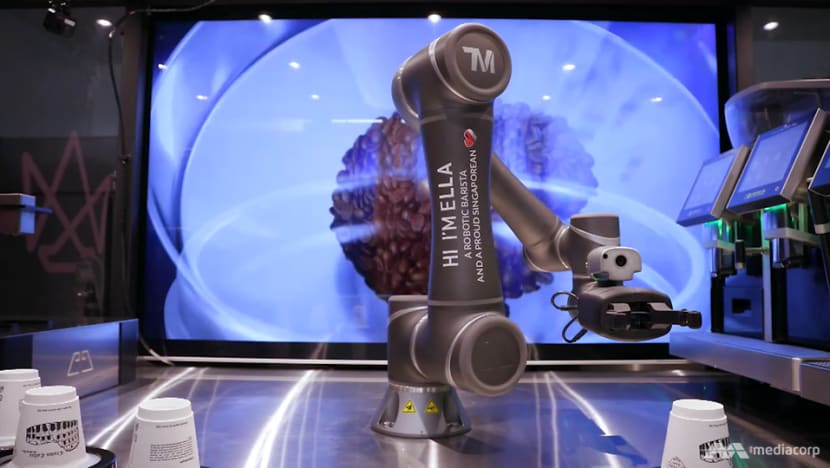
Introducing kopitiam-style coffee (Nanyang-style coffee) to international markets is also something Pathross hopes to do.
“We’ll take that technology overseas to Europe and the United States, where we can serve homesick Singaporeans (and) expose the Americans and Europeans to Nanyang coffee,” he said.
MORE EFFICIENT AND RELIABLE
According to him, the use of robots can also help to mitigate some of the costs in the F&B industry, which has been greatly challenged by rentals, wages and the cost of ingredients.
The cost of leasing Ratio is between S$2,500 and S$3,500 a month, which is comparable to the average salary of F&B service staff, including bartenders.
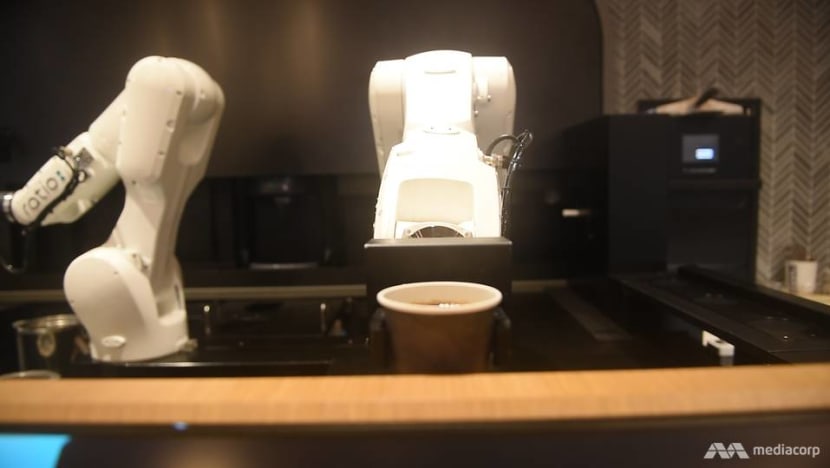
“But what you get is about three to four times the efficiency, depending on how long you want the robot to work,” said Pathross, adding that a robot can work 24/7, has almost no downtime and “typically … doesn’t fall sick”.
“Robots are generally quite good in not wasting or making wrong drinks, which means (they) can reduce the cost of ingredients.”
A well-trained barista can make up to 60 cups of latte an hour, but a robot probably doubles that, he reckoned.
Singh, whose monthly lease on Ratio includes kitchen equipment such as ice machines, chillers and coffee equipment, agrees that the robot will be more efficient and reliable.

He met Pathross about a year ago in Shanghai, at a pop-up cafe-bar with this robotic bartender, and was convinced that this technology would be able to serve the F&B industry, since “we’re cursed by manpower crunch issues”.
“There’s always that issue of unreliable staff and high turnover. The only way to eradicate it will be (automation),” said Singh. “It’s almost impossible to find good, reliable bartenders to stay with you too. They’d want to move around.”
A CROWD-PULLER?
To test the robot’s speed, CNA Insider set up a friendly 'contest' between Ratio and bartender Sylvia Yee.
To make a Tom Yum Martini, both robot and human took one and a half minutes, which impressed Yee. But she was not worried about losing her job to robotics.
“The human bartender will still be the one to come up with a cocktail recipe … or come up with a new cocktail trend,” she said. “(Robots) still need to work … together with a very experienced bartender.”
In fact, that is what Singh has planned for when his new restaurant, The Singapura Aerospace Club, opens this month: A bartender to attend to his customers while Ratio makes the cocktails in the background.
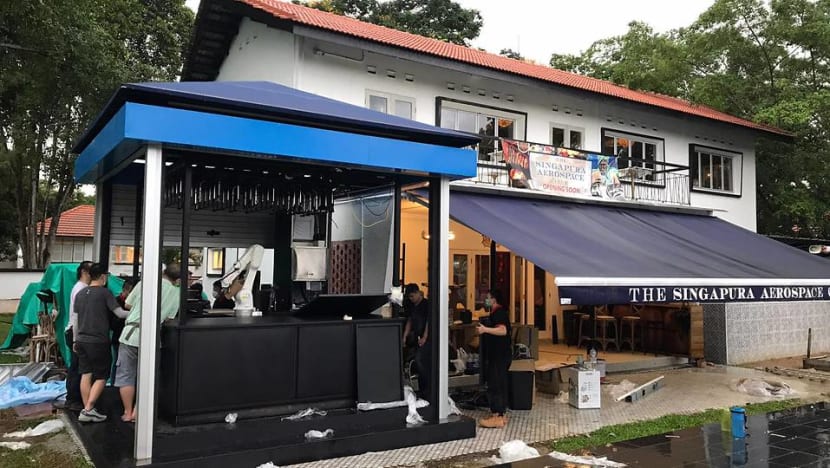
“It’s still a people business. We aren’t going to become a faceless business … The human touch will still be there — it’ll never be taken away,” said Singh, who also runs The Singapura Club restaurants on Haji Lane and Dunlop Street.
But he hopes the robot bartender can help to bring in the crowd too, at a time when footfall in F&B establishments is declining because of COVID-19.
“It’ll be a cool novelty for them to … see how a robot bartender works. This innovation will appeal to the young and the old,” he said. “Not many have seen this kind of technology.”
Lawrence Loh, an associate professor of strategy and policy at the National University of Singapore Business School, thinks the concept’s novelty value can draw people to such establishments, at least initially.
“But it may not be indicative of a sustained demand,” he said. “In the long run, (the F&B outlet) must still have a value proposition and a unique selling point.”
Editor's note: An earlier version of this story compared the time it took for the robot and a human to make a cup of tea. The company has since clarified that this was not an accurate comparison as each performed different variations of the process.
